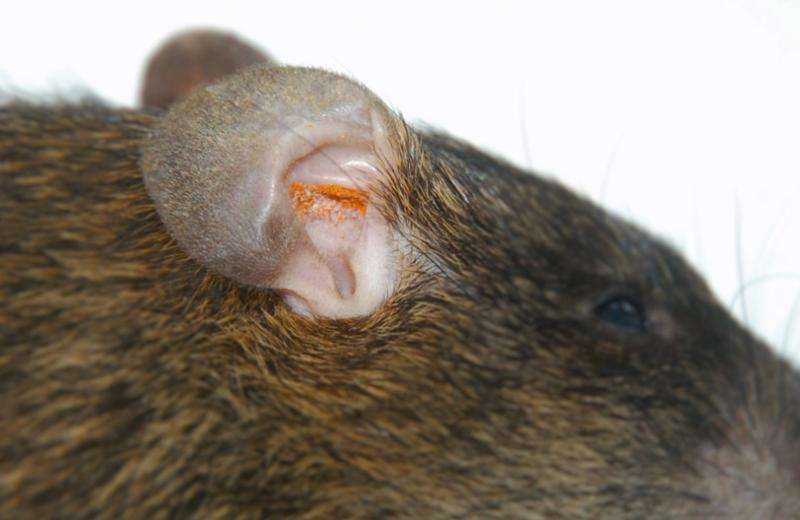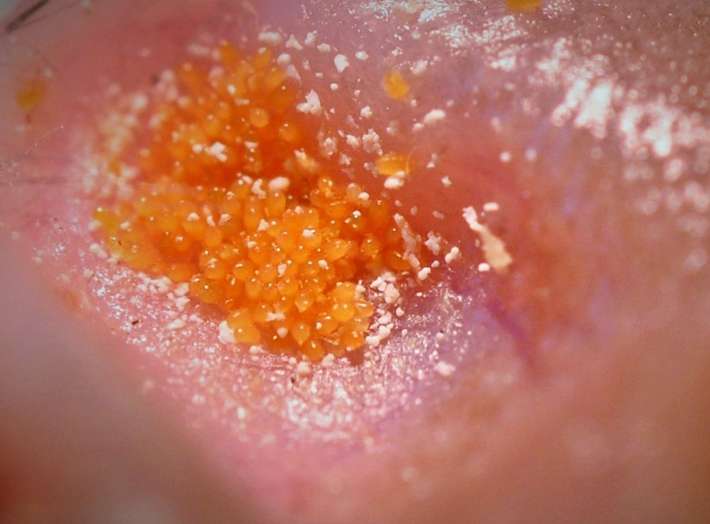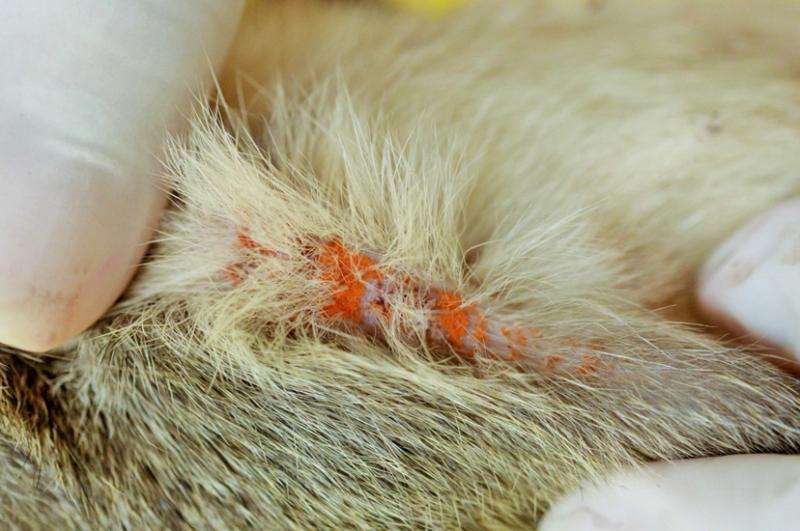Chigger mite aggregations such as the one shown heer are commonly found in the ears of rodents. Credit: Kittipong Chaisiri
Three new species of chigger mites have been discovered in Thailand, and are described in an article in the Journal of Medical Entomology.
The new species were discovered as part of a broad sampling effort across 11 provinces in Thailand, and they were found on rodents. With the addition of these three species, there are now 99 known species of chiggers in Thailand.
The three mites all belong to different genera, but they belong to the same family, Trombiculidae. This finding is important because trombiculid mites can be vectors of scrub typhus.
The first newly discovered species is called Trombiculindus kosapani. It was named after Kosa Pan, a Siamese diplomat and minister in the 1600s.
Another one of the new species is called Helenicula naresuani. This chigger is named after Naresuan, the king of the Ayutthaya Kingdom (in what is now modern Thailand) from 1590 to 1605. The authors of the article state that he was "one of the most glorious Thai kings."
A close-up photo of a chigger cluster in the ear of an infested rodent. Credit: Kittipong Chaisiri
The final new species described in the paper is Walchia chavali, named after Yannick Chaval, a wildlife expert who contributed greatly to the authors' field studies.
Detailed descriptions of the new species, as well as a checklist of the chiggers in Thailand, can be found in the article.
A cluster of chiggers on the body of a rat. Credit: Kittipong Chaisiri
More information: A Revised Checklist of Chigger Mites (Acari: Trombiculidae) From Thailand, with the Description of Three New Species, dx.doi.org/10.1093/jme/tjv244
Journal information: Journal of Medical Entomology
Provided by Entomological Society of America

























